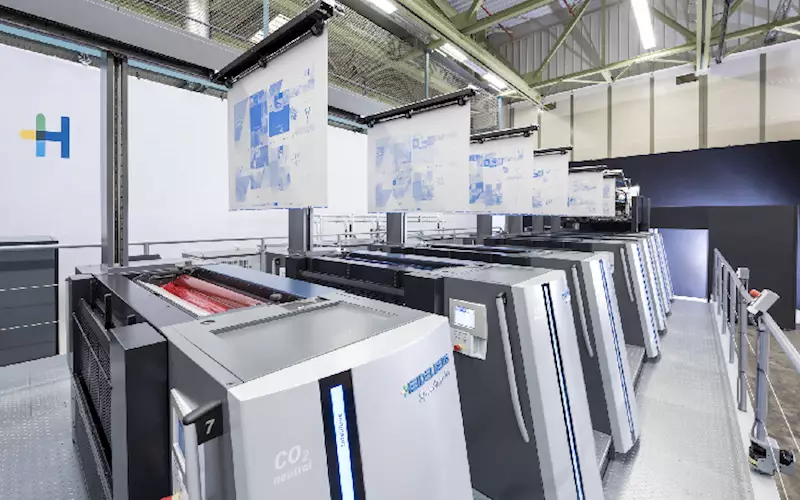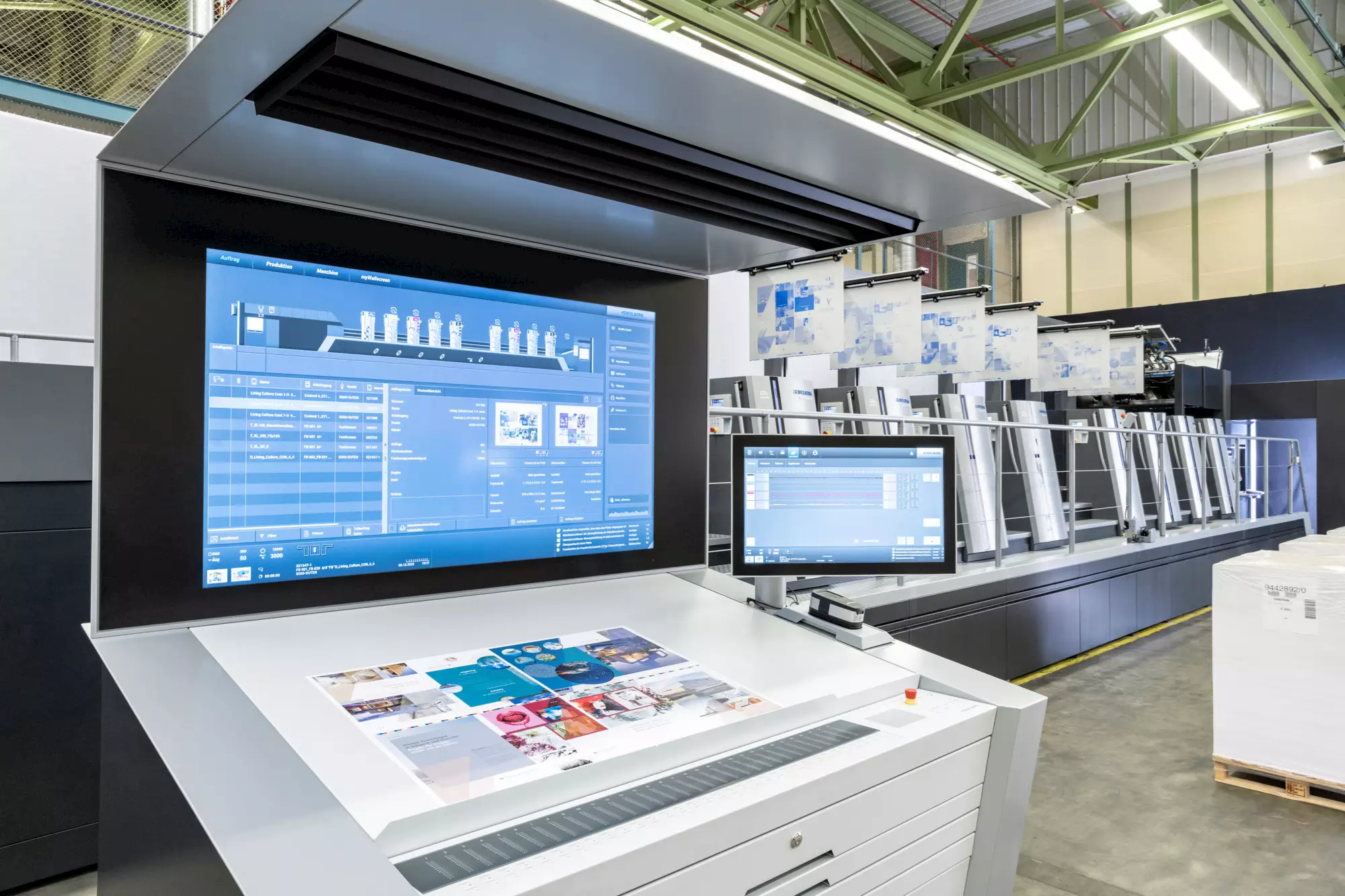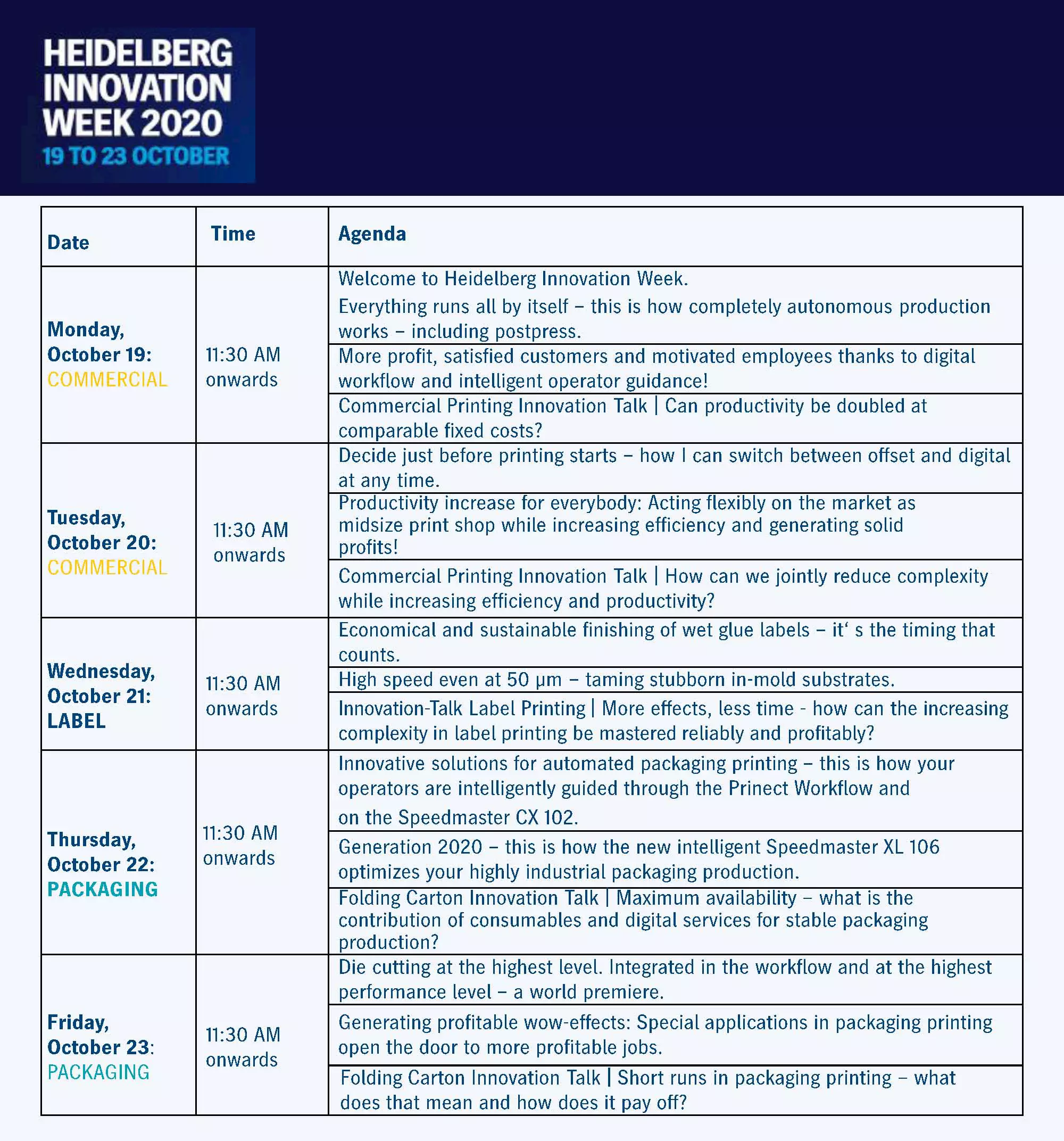Day one of Heidelberg Innovation Week: Heidelberg puts its automation prowess in spotlight
At the ongoing virtual Innovation Week hosted by Heidelberg, the company explained how automation in production will help commercial printers in terms of efficiency and cost benefits.
20 Oct 2020 | By Aultrin Vijay
German equipment manufacturer Heidelberg is organising a virtual to display its prowess in printing technology and automation. The five-day event will predominantly focus on packaging, labels and commercial printing, including autonomous printing, end-to-end solutions, smart print shop and push-to-stop.
The company’s global sales operations manager for Prinect Nick Gawreluk, presented on the new features in its presses, especially in commercial printing.
“Our customers are also our partners,” said Gawreluk at the beginning of the presentation. “And together, we have developed new innovations in commercial printing with a focus on cost benefits through automation and a flawless production.”
“Full automation is a monumental step. We have achieved this and know that it leads to doubling production all with nearly the same fixed costs,” said Gawreluk
The company calls the new concept as Push To Stop – end-to-end autonomous production. This means all parts of the process chain are centrally controlled and networked via the unique system.
New Plate to Unit system
Within Prinect, orders are registered and processed. Jobs are brought into the optimal production sequence and plates are output at the Suprasetter in the correct order. From the fully automatic CTP the printing plates are placed on the plate trolley upto 10 jobs at a time. The company’s Plate to Unit system supplies the press with the required plates automatically without any mixups and damage.
Rainer Wolf, head of segment management commercial at Heidelberg said, “With industrial production of short runs, we get to 10-20 job changes per hour in no time at all. Plate to Unit reduces the operator’s workload and ensures a reliable and stable process. Each plate has its own ID. This is how we ensure that the right plate is provided at the right time in the right printing unit. The risk of creases or scratches on the plate is eliminated. The process is more stable, downtimes are minimised, and the quality is better.”
The plates are removed from the plate trolley, checked for accuracy and correctly placed in the plate changing system. According to the company, the reliability of the plate changing system has increased and no longer do complaints exist due to undetected scratches.
Gawreluk explained: “During the continuous printing process the machine prepares the next change. Once the print run is reached, job change programme Intellistart 3 starts the changeover automatically. In less than a minute, rubber blankets are washed and all printing plates are changed at the same time.
“With the new Autoplate XL 3, which is 30% faster, the first sheets of the next job are delivered in just a few seconds. The in-line paper ejection ensures independently waste free piles. The waste is shredded and vacuumed off.”
Efficient drying and folding
Further, Gawreluk shared some benefits of the company’s new Drystar LED Pro – Heidelberg’s energy efficient UV technology. “The new generation of the DryStar LED Pro dryer systems is not only 20% lighter, it is also more powerful and ensures a dry pile in the delivery, which can go straight into post-press.”
For jogging before the cutting, the company showcased its new AirGo Jog feature that can remove cutting layers from the pallet automatically.
According to Gawreluk, the folding takes place without any operator intervention. Dry pile is transported by an autonomous transport vehicle from the press to the Stahlfolder KH 82-P folding machine, which folds around 15,000 sph using the shingled folding principle. The KH 82-P is also integrated via the Push to Stop concept and detects the next signature automatically by the printed barcode.
Doubling of production
According to Gawreluk, each new signature is autonomously recognised and automatically started. Compared with the previous workflows, this eliminates a total of six steps as well as the factor of operator influence.
“The operator moves around seven tonnes of paper in one shift on this high-performance machine – a bundle every 12 seconds. The only way we can continuously realise the full potential of the press is by significantly reducing the operator’s workload. This is why we developed an industrial robotic solution with the Stahlfolder P-Stacker, which also permits the use of Euro pallets. Most of the know-how here is in the sophisticated gripper system, which was modeled on the human hand,” explained Wolf.
The folding machine operator enjoys a significant reduction in workload and gets a modern, automated, and highly productive workstation, he added.
Meanwhile, Gawreluk said that the largest area of potential resides within operators and processors. “With Push to Stop – end-to-end – and the new Heidelberg user experience, we placed significant focus in this area. Only through the coordinated interaction of technology, software and user guidance, doubling of production possible.
“We speak provocatively about doubling productivity with Push to Stop – end-to-end. That is quite possible for the majority of print shops – a small number are already demonstrating this in real life, and not just the web-to-print printers, either. It’s our mission to enable our customers to unlock this potential. Because our customers’ success is ultimately our success, too,” explained Wolf.
Heidelberg’s new Plate to Unit system
Christine Kaser, product manager, Heidelberg
With Plate to Unit we have developed an innovative system that enables the fully automatic transportation of printing plates into the respective plate compartment in the printing units of your Speedmaster XL 106 without any operator intervention.
The plate trolleys developed specifically for the plate-to-unit system consists of a transport rack and a plate storage system. The plate storage system is removable and con hold upto 80 printing plates. The new plates and used old plates are stored separately. The plate trolleys are compatible with most unloading and sorting lines and can thus be easily integrated into pre-press.
In parallel, the printing plate trolley with the printing plates for the next job sequence is pushed into a lift and locked in position there. The lift is available for the drive side and operator side. The new plate storage system is moved upwards over the feeder into its start position.
A swivel arm takes out the new plates and separates them. The plates are never touched on the delicate coated side during either separation or transport. This ensures that they are kept free from scratches and make it into the printing unit with undamaged edges. The swivel arm places the printing plates down on the belt. From there they are fed to the gripper bar.
Each printing unit has its own gripper bar. A barcode reader detects the plate ID and compares it to the job data of the current job. This ensures that the right printing plate is placed in the right printing unit. The fully automatic nature of the processes means it is not necessary to access the machine during the installation. The safety conceptemphasises protection of the operator.
The access to the printing units and the gallery are secured by sensors. If the operator enters the area during the process, Plates to Unit stops. The new plates for the next job are synchronously and gently inserted into the respective printing units’ plate compartment. Vibrations are eliminated through targeted guidance and the plate feeding is optimised. The print job is finished. The Intellistart 3 patented job changing system now takes charge. The gripper systems remove the old plates from the output compartment. The old plates are returned, the new plates are clamped, and the printing process can be restarted with no more time lost. The old plates are placed in the old plate storage system.
As soon as all old plates have been removed, equipping the press with the printing plates for the next job begins. The system is modular, which means that its height and length can be configured. Plate to Unit can be individually adapted to the ink supply. The reduction of manual interventions pays off for you. Defective plates or plates edges and scratches are now a thing of the past. Upto 20 jobs can be produced without errors.
Benefits of the Plate to Unit system
With Plate to Unit, the printing plates are provided and removed using a fully automated process
- Fully automatic, optimised printing plate logistics during production process.
- Reduced material costs
- Individually configurable modular system
- No interference with the architecture of the building
- User-independent plate handling
- Less manpower even with high volumes

















 See All
See All